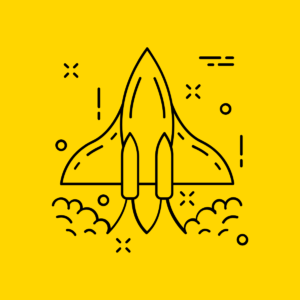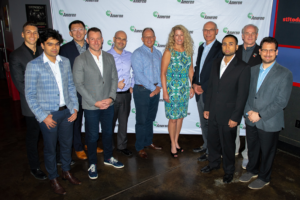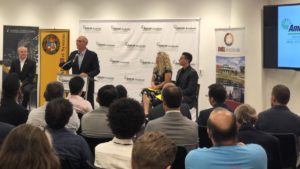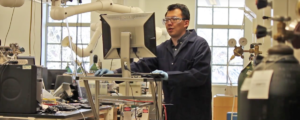
Applied Particle Technology Wins $100,000 in NASA Earth and Space Air Prize Competition
St. Louis cleanTech startup just won their ticket to the moon.
NASA, in collaboration with the Robert Wood Johnson Foundation (RWJF), selected Applied Particle Technology, LLC from St. Louis, Missouri, as the $100,000 grand-prize winner of its Earth and Space Air Prize Competition. The agency is hoping to use new aerosol monitoring technology to, “keep astronauts breathing easy,” according to a press release.
“Breathable air is necessary to sustain humans both on Earth as well as in space. To ensure the health of humans living on Earth as well as those traveling in spacecraft to the Moon or Mars, aerosol sensors are needed to monitor air quality and alert engineers when action is necessary.”
Competing teams were asked to develop robust, durable, inexpensive, efficient, lightweight, and easy-to-use sensors to detect tiny airborne particles, known as aerosols, and monitor air quality for space and Earth environments. More than 20 proposals were submitted, and three finalists were selected. Each finalist was awarded $50,000 to build a functioning prototype in seven months and was then invited to test their designs at NASA’s Glenn Research Center, in Cleveland before a winner was selected.
Applied Particle Technology Win Grand-Prize
The winning team consists of Jiaxi Fang and Tandeep Chadha from Applied Particle Technology and Pratim Biswas and Jiayu Li from Washington University in St. Louis’s Aerosol and Air Quality Research Laboratory. The cleantech startup is an Arch Grant Recipient, Capital Innovators and Ameren Accelerator.
Applied Particle Technology specializes in air quality sensors and air treatment systems for environments that require high efficiency removal of aerosols.
“We are developing new technologies for aerosols and air quality monitoring specifically targeted to help protect people from exposures to harmful airborne pollutants,” said Jiaxi Fang, CEO and Co-Founder of Applied Particles Technology LLC.
The team is developing and researching new sensing technologies and calibration techniques to obtain high quality data on particle size and properties. Advanced and robust data algorithms have enabled Applied Particle Technology to offer low cost and accurate air quality sensing solutions.
There are similarities between Earth-based needs and spacecraft needs for particle sensors, and the Earth and Space Air Prize Challenge combined those requirements into one challenge with multiple applications.
“We have a need at NASA for miniaturized particle accounting instruments, or aerosol instruments, and we’re looking to get the technology development stimulated to the point where we have something that we can use in spaceflight,” said Marit Meyer, research aerospace engineer at NASA’s Glenn Research Center, in Cleveland.
The STL Way: Innovate Through Grand Challenges
NASA and RWJF used a prize challenge because they often uncover unique approaches to problems and can provide participants with a unique opportunity to develop ideas while solving problems that can have lasting impacts on the health of humanity. The intent of the challenge was to catalyze the development of new aerosol sensor technology which goes beyond advancing existing technology.

The prototype from Applied Particle Technology demonstrates that challenges like this can result in new approaches to aerosol technology with potential for operational use in space.
“This challenge fits perfectly with what we are working on. Our company is trying to develop technologies to help measure harmful airborne pollutants in a scalable way that is easy for everyone to access and understand,” said Fang. “This was a perfect way for us to bring in our technology and validate it along with an organization like NASA.”
Looking ahead, the hope is that the winner of this competition will be able to work toward securing a technology demonstration onboard the International Space Station. Demonstrating the winning solution on the space station could help build confidence for potential operational use in a spacecraft environment. The sensor could then be a candidate for use by a commercial space company, in a smart city application or on future NASA missions.





